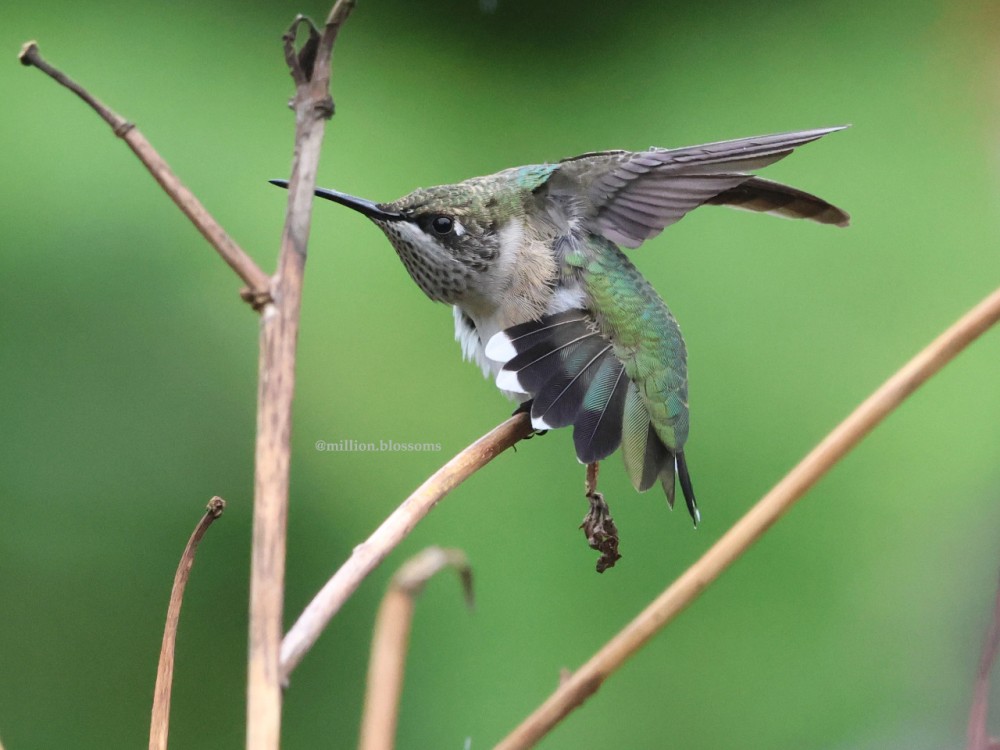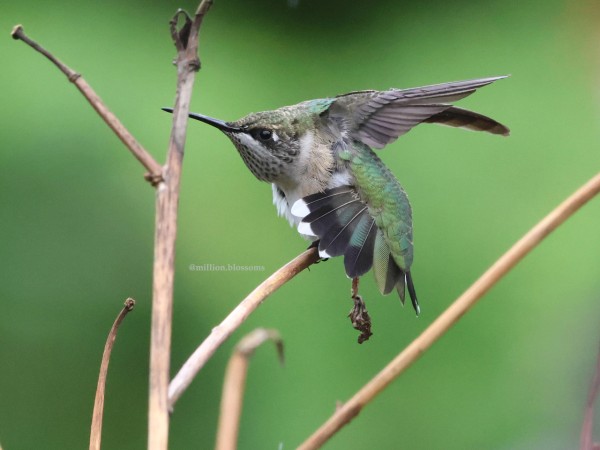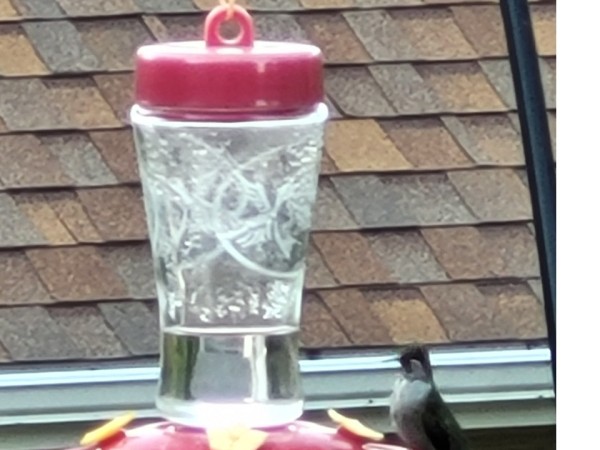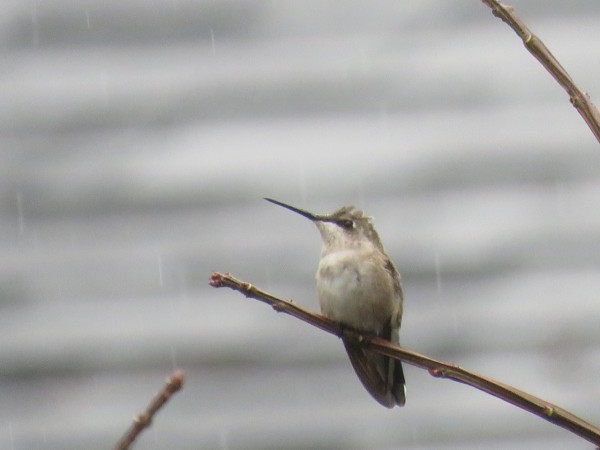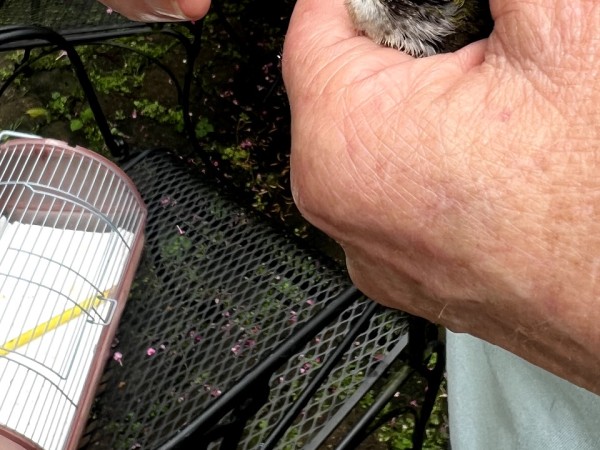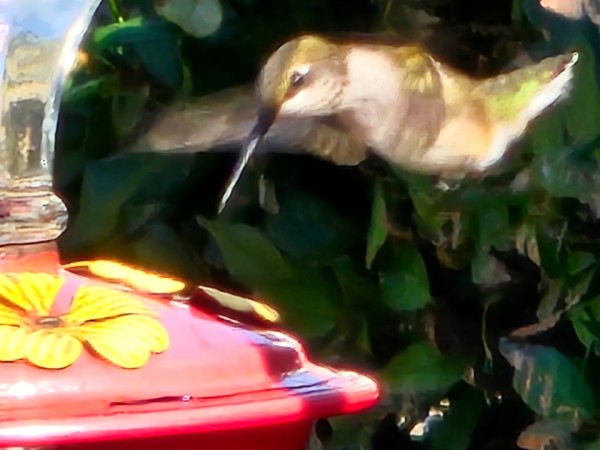Birders prepare for final hummingbirds' departures
It’s October, and many people who closely track their annual migrations are getting ready to wave goodbye to the last hummingbirds of the year.
“Two residents and a migrant are preparing to leave i.e, nectaring even after sunset. In most years, resident hummingbirds leave on Oct. 2 but migrants keep coming until Oct. 10,” Journey North participant million.blossoms wrote from Carmel Hamlet, New York on Oct. 1. “Our cool temperatures (60s/40s) have driven away butterflies and birds earlier this year. So, it is unlikely hummingbirds will stay here longer.”
In St. Paul, Minnesota, Mike wrote on Oct. 2, “This immature male ruby throat is bringing us closer to our average last sighting date. He is a hardy little soul! He perches on a rope then dives onto the feeder and gulps down nectar. He's a great character and hilarious to watch. Being here this evening means he will roost nearby overnight. Hopefully we'll see him tomorrow morning.”
Three days earlier, Mike wrote, “I thought we were done last Wednesday but at least one ruby throat has been around the last several days. Every extra day is a blessing. It's been another fun hummingbird season. I don't think we'll have a hummingbird hang on until October 31 like last year.”
Mike’s was the final Journey North report from Minnesota last fall. It remains to be seen when this year’s latest hummingbirds in the North Star State will depart. There are always a few that miss the memo and don’t leave with the rest.
Last year, Hugo in Point Edward, Ontario spotted a hummingbird on Dec. 1, writing, “It appears pretty healthy. Definitely odd though and surprised it survived a few -15 nights!”
In the past week, no reports have come in from the northeastern states of Massachusetts, Delaware, Vermont, New Hampshire and Maine. We'll see if we receive any more hummingbird reports from these states. A report from Joan in Monroe was the only one received from Connecticut.
Hurricane Helene
Some people expressed concern for how hummingbirds, monarch butterflies and other wildlife would handle Helene, which has devastated areas of the Southeast.
On Sept. 26, a few days before Helene made its way through North Carolina, Sophie in Kernersville, North Carolina wrote, “We still have about a dozen juvenile Rubies here with us, both male and female. We've had a ton of rain this week, with a lot more on the way with Helene. The juvies are laying low for the most part, conserving energy and fattening up, occasionally chasing and playing. They all have their favorite perches around the yard. The little munchkin in the photo is a female juvenile who was released in our yard earlier in the week by a wildlife rehabber friend. She hit a window after a near miss attack with a cat. We named her Tinkerbelle and she is doing well now. Hopefully, she'll spend a couple weeks rebuilding her strength, fatten up, and head south on her first migration. Praying for all those, people, pets, livestock, birds, and wildlife, in the path of Helene today, tonight, and the next several days.”
In Charleston, South Carolina, Ellen wrote on Sept. 28, “We were pleased to see that our resident hummingbirds fared well through tropical storm Helene,” reporting six hummers.
Earlier this year, David Aborn wrote for Journey North that birds will often find the eye of a hurricane and circle in the eye until the storm passes. This could be seen on radar last week shown in a radar photo posted by X user Colin McCarthy (@US_Stormwatch).
See this blue blob on radar.
These are birds stuck in the eye of Hurricane Helene! pic.twitter.com/traq2BQqWD— Colin McCarthy (@US_Stormwatch) September 27, 2024
Tell us what you’re seeing
Whether you’re holding on to the last few hummingbird sightings of the year or your feeders are filled with new life as hummingbirds pass through on their way south, let us know what’s going on in your neck of the woods.
Report your sightings to Journey North, including your location, number of hummingbirds spotted, and any information about your observation, including but not limited to: the hummingbird’s sex, weather conditions, which flowers hummingbirds were visiting and the presence of feeders.

